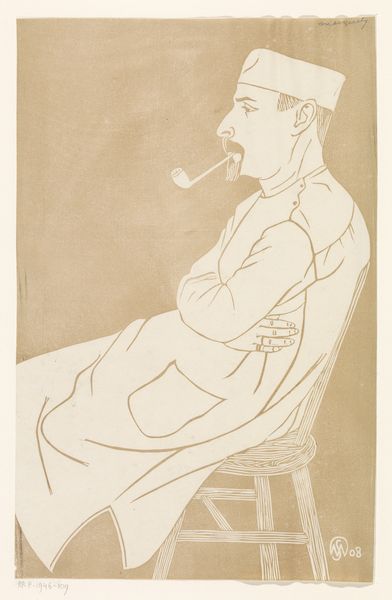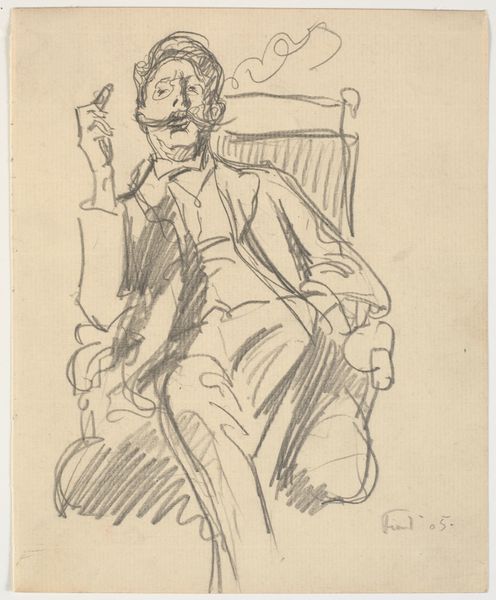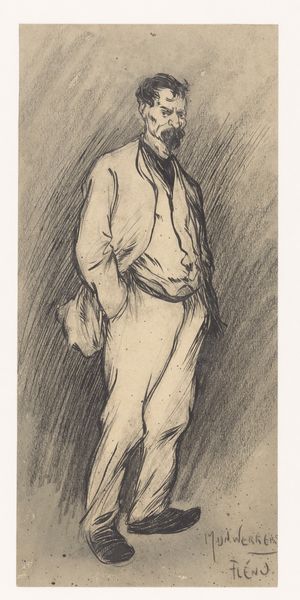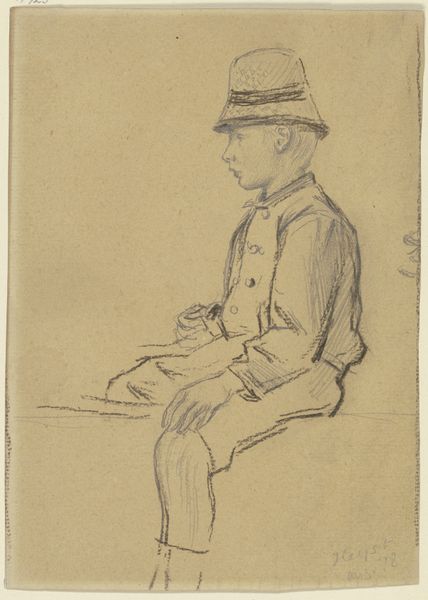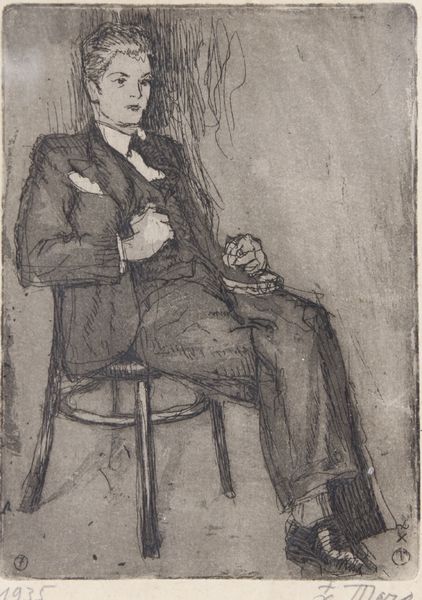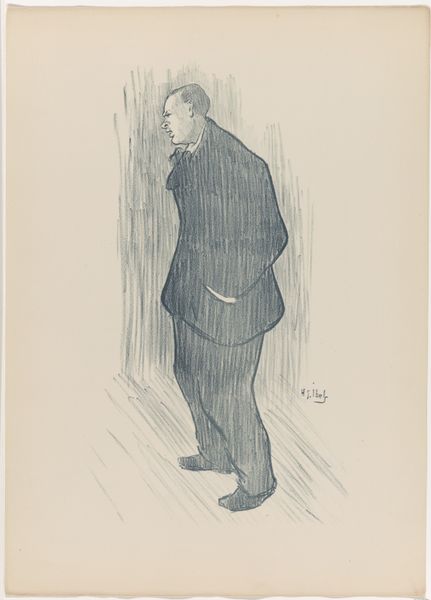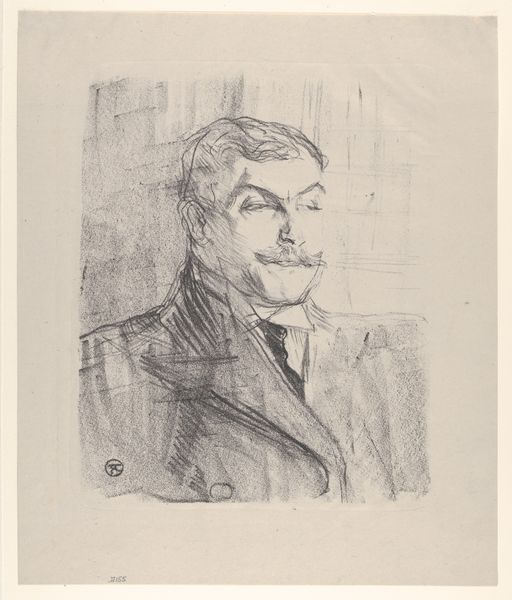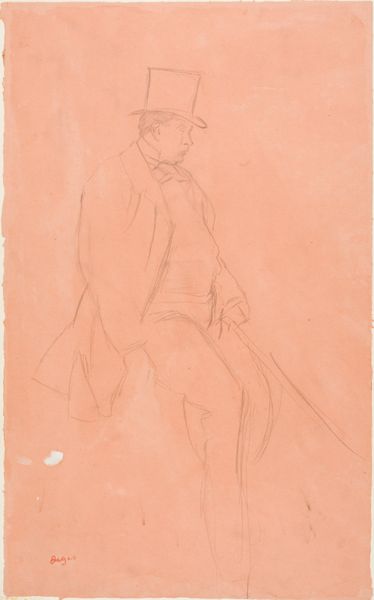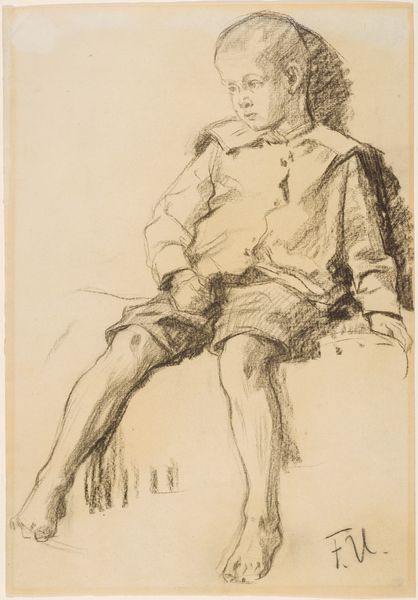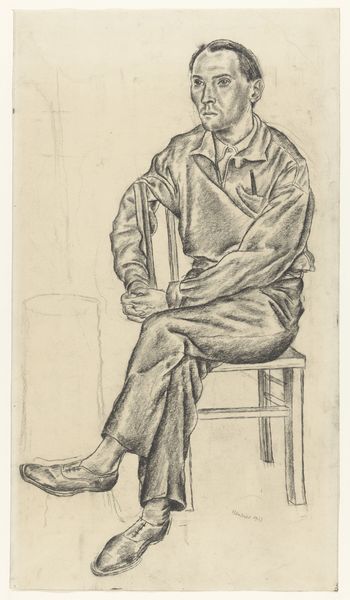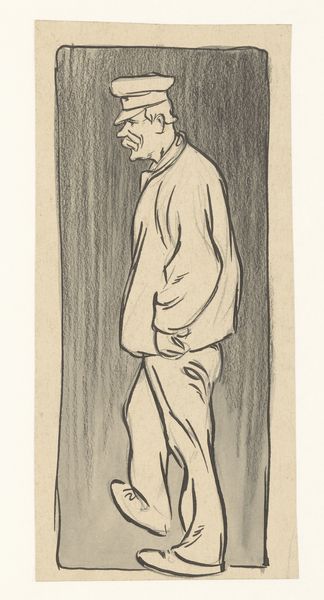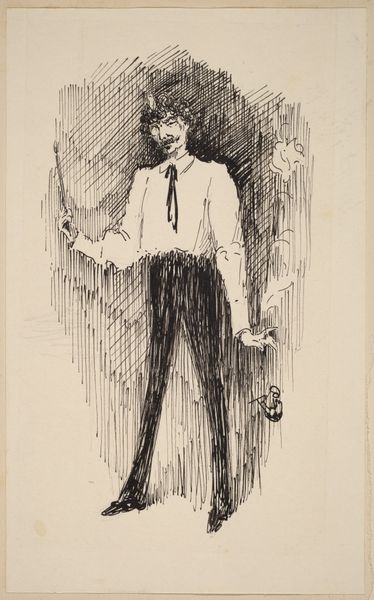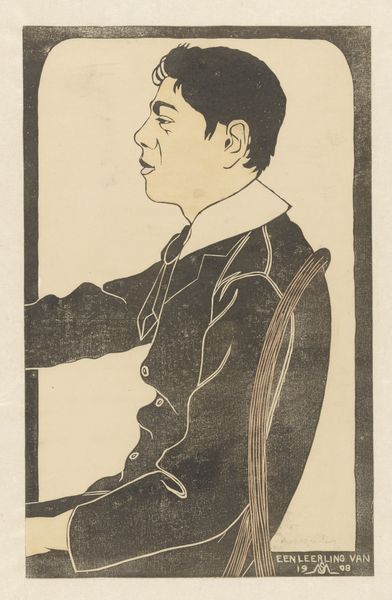
drawing, ink, pen
#
portrait
#
drawing
#
figuration
#
ink
#
pen-ink sketch
#
pen
#
realism
Dimensions: height 266 mm, width 166 mm
Copyright: Rijks Museum: Open Domain
Curator: This ink drawing, "Zittende man," or "Seated Man," by Jan de Waardt, dates from between 1881 and 1899, and is currently held here at the Rijksmuseum. Editor: My first impression is how confined he feels. The hatching around him suggests an enclosure, not entirely comforting, is it? Curator: That’s interesting. From a material standpoint, the rapid, almost frantic use of pen and ink points to a specific urgency in its production. The starkness speaks volumes about the economic constraints often placed upon artists at that time, and even about the availability of materials to make his art at all. Editor: Exactly! And who was de Waardt portraying, and for what audience? The almost caricatured details – the pointed mustache, the sharply angled coat – hint at a satirical commentary on the bourgeoisie, who, remember, are among the new prominent public of the Rijksmuseum, beginning in 1885. Curator: Good point. His posture, so deliberately staged, might actually undermine any real sense of self-possession. It appears performative. He might well be someone who toils but appears to float free of labor. Editor: I’m glad you point that out. And let’s think about its reception back then. Viewers would likely have situated it within the ongoing debates about social class, maybe prompting uncomfortable self-reflection, if the viewers felt portrayed in him. It also reminds viewers about who can and can't occupy those seats in public art spaces. Curator: Yes, absolutely. His almost disembodied air reinforces that sense. The artist, De Waardt, using minimal materials has brought forward that divide between the working class and who they want to portray. It’s a study in social tensions made potent through the physical act of creation. Editor: Ultimately, seeing “Zittende man” through our contemporary lens urges questions of what’s changed or stayed static regarding access and depiction. The man feels simultaneously dated and familiar, doesn’t he? Curator: Definitely. This work compels us to reconsider the narratives we construct about art and its capacity to illuminate societal power dynamics throughout history, even with so simple a technique.
Comments
No comments
Be the first to comment and join the conversation on the ultimate creative platform.
